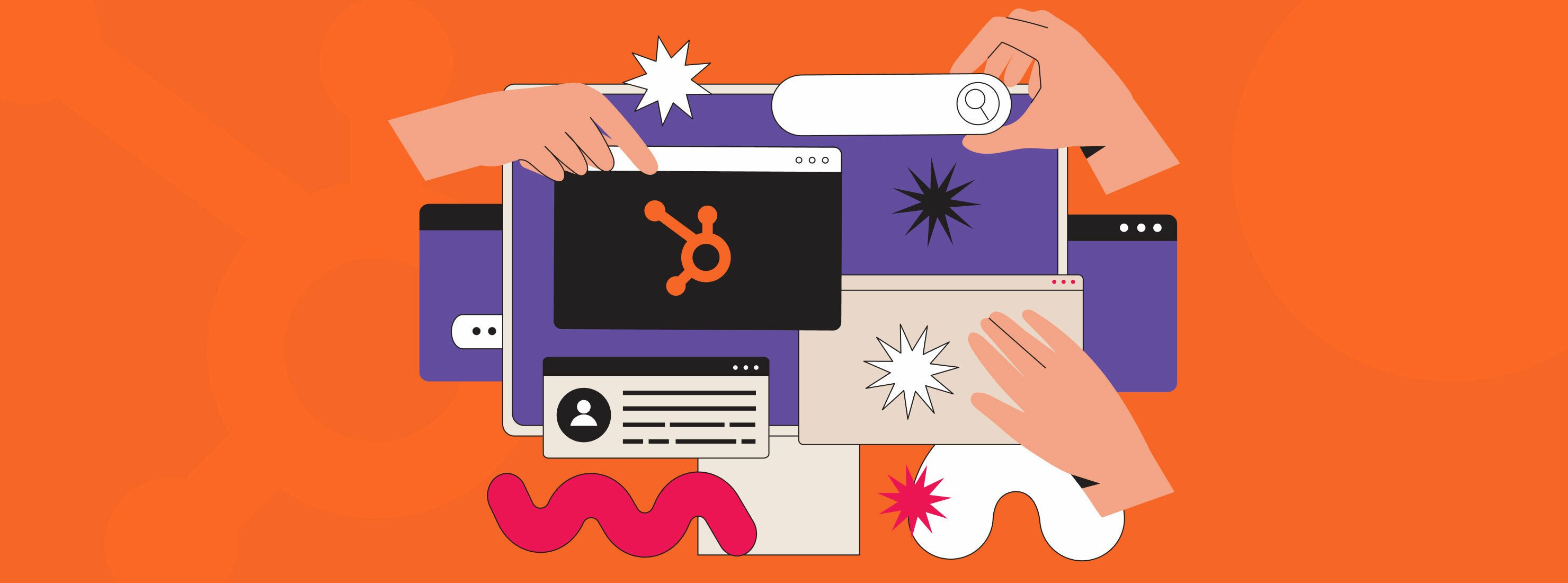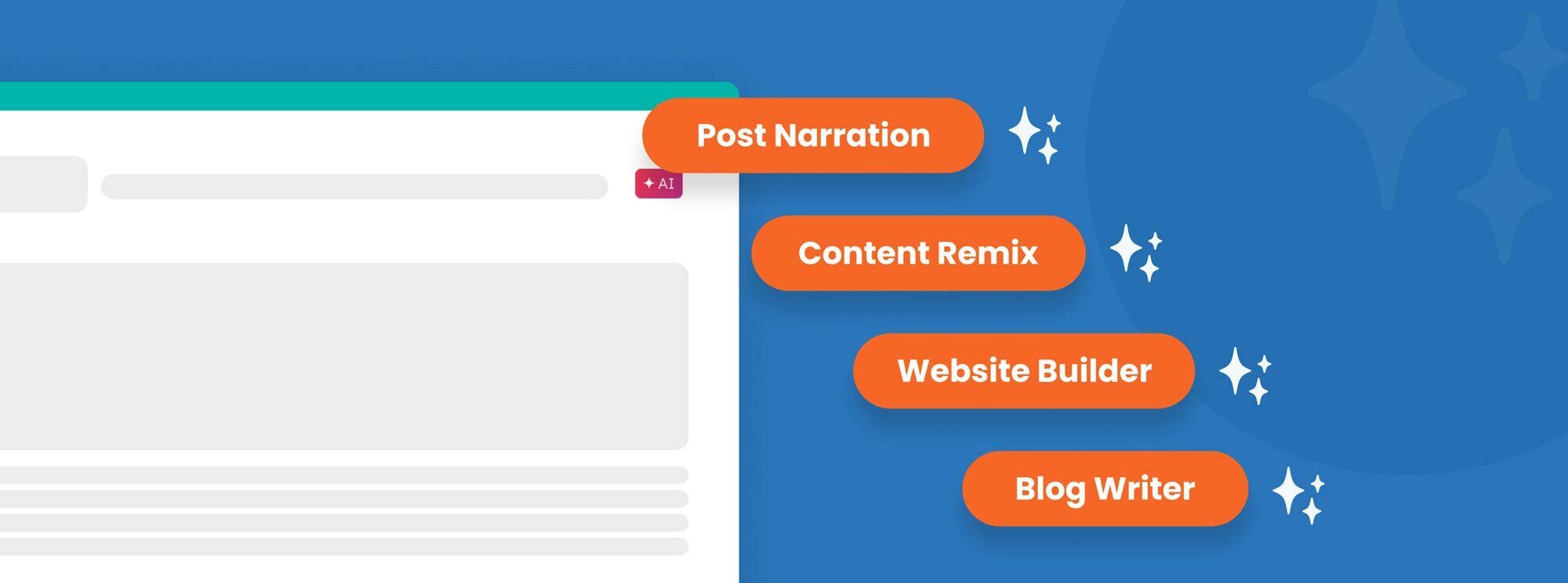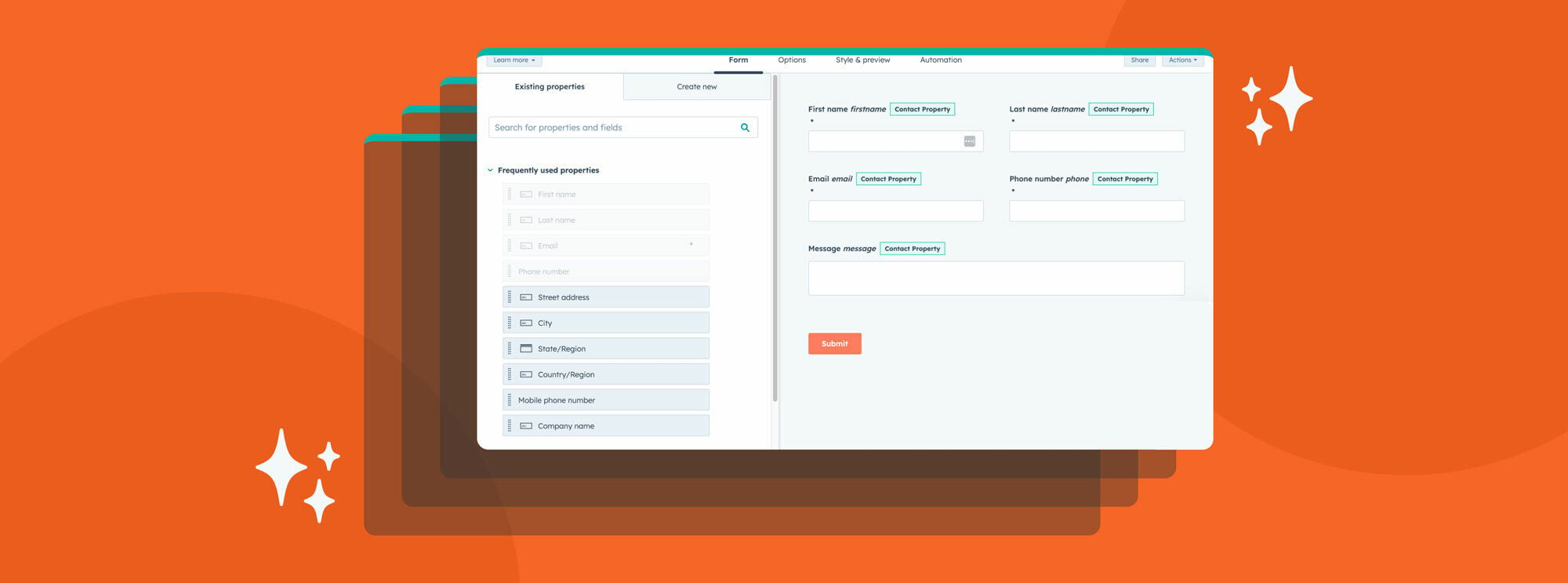As your business grows, measuring customer loyalty and satisfaction is essential to maintain a healthy relationship with your customers. One of the most effective ways to do this is through Net Promoter Score (NPS) surveys. These surveys help you gauge how likely your customers are to recommend their products or services to others.
However, collecting NPS data can be challenging, especially if you don’t have the right tools and resources. This is where HubSpot’s interactive Feedback Surveys tool comes in handy. With this tool, you can gather valuable feedback and insight into customer sentiment easily.
In this blog post, we’ll delve into the importance of NPS surveys and how HubSpot’s Feedback Surveys tool can help you improve your products, services, and overall customer experience. We’ll also share our NPS setup for you to use with your customers.
Table of Contents
- What is a Net Promoter Score (NPS) survey?
- Why is it important for businesses to conduct NPS surveys?
- Take this: HubSpot NPS survey setup
- Creating and customizing a HubSpot NPS survey
- Feedback
- Thank you
- Recipients
- Automation
- Source customer feedback with HubSpot
What is a Net Promoter Score (NPS) survey?
Net Promoter Score is a customer loyalty metric that measures how likely customers are to recommend a business’s products or services. The NPS survey asks customers a simple question: “On a scale of 0 to 10, how likely are you to recommend this product/service to a friend?” Based on the responses, customers are classified into three categories:
- Detractors (0-6): Customers who are not satisfied with the product/service and are unlikely to recommend it.
- Passives (7-8): Customers who are satisfied with the product/service but are not enthusiastic enough to recommend it.
- Promoters (9-10): Customers who are highly satisfied with the product/service and are likely to recommend it to others.
The NPS score is calculated by subtracting the percentage of detractors from the percentage of promoters. The score ranges between -100 (if all customers are detractors) and +100 (if all customers are promoters).
Why is it important for businesses to conduct NPS surveys?
Well, the answer is simple—customer loyalty drives business growth. Happy customers are more likely to become repeat customers and recommend your products or services to others. By measuring customer loyalty through NPS surveys, you can identify areas where you need to improve and take action to increase customer satisfaction. This, in turn, can lead to increased revenue and business growth.
Take this: HubSpot NPS survey setup
We’re sharing an NPS survey we’ve set up in HubSpot to collect feedback on our HubSpot Onboarding service. We’ll dive into creating and customizing the survey, targeting, and automated follow-ups. Feel free to use this blueprint as a jumping-off point and adjust as necessary for your business and goals—or copy it as is!
Please note: This feature is only available with Service Hub Professional or Enterprise subscriptions
Creating and customizing a HubSpot NPS survey
Creating your NPS survey in HubSpot is easy— follow these steps:
- Click “Service” from the main navigation and then “Feedback Surveys” in the dropdown
- Click the orange “Create survey” button in the upper right-hand corner of the screen
- Scroll to the bottom and select “Customer Loyalty”
- Select “Email” as the delivery method
Voila! Your NPS survey has been created.
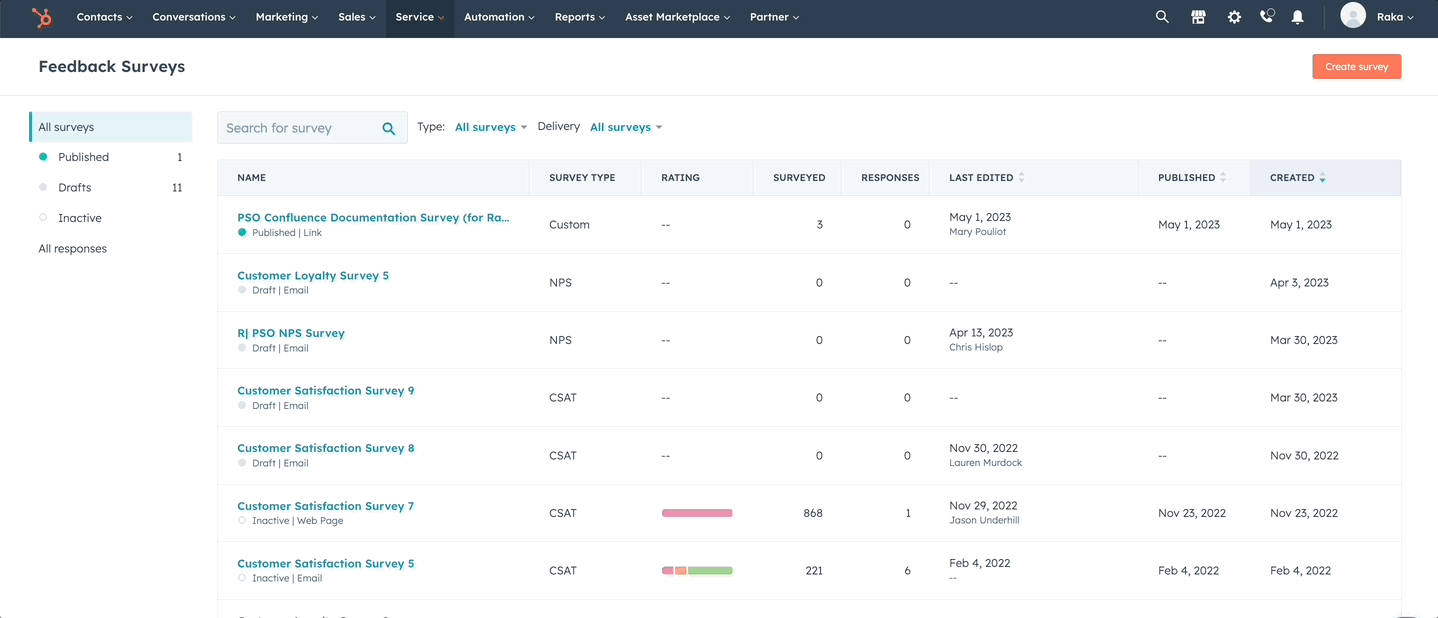
HubSpot provides an out-of-the-box NPS survey, and you can certainly use it as is. We chose to add a personalization token to the subject line and the email body to customize the experience. We also adjusted the email body copy to better reflect our brand’s tone, and included an image of our logo.
Something to note: you will not be able to customize the survey question.
The Net Promoter Score is an industry-standard question used by businesses around the globe. The standardization of the question ensures that all businesses are measured in the same way, therefore providing a true benchmark for comparison.
The NPS survey question will always be:
How likely is it that you would recommend [Business Name] to a friend or colleague?
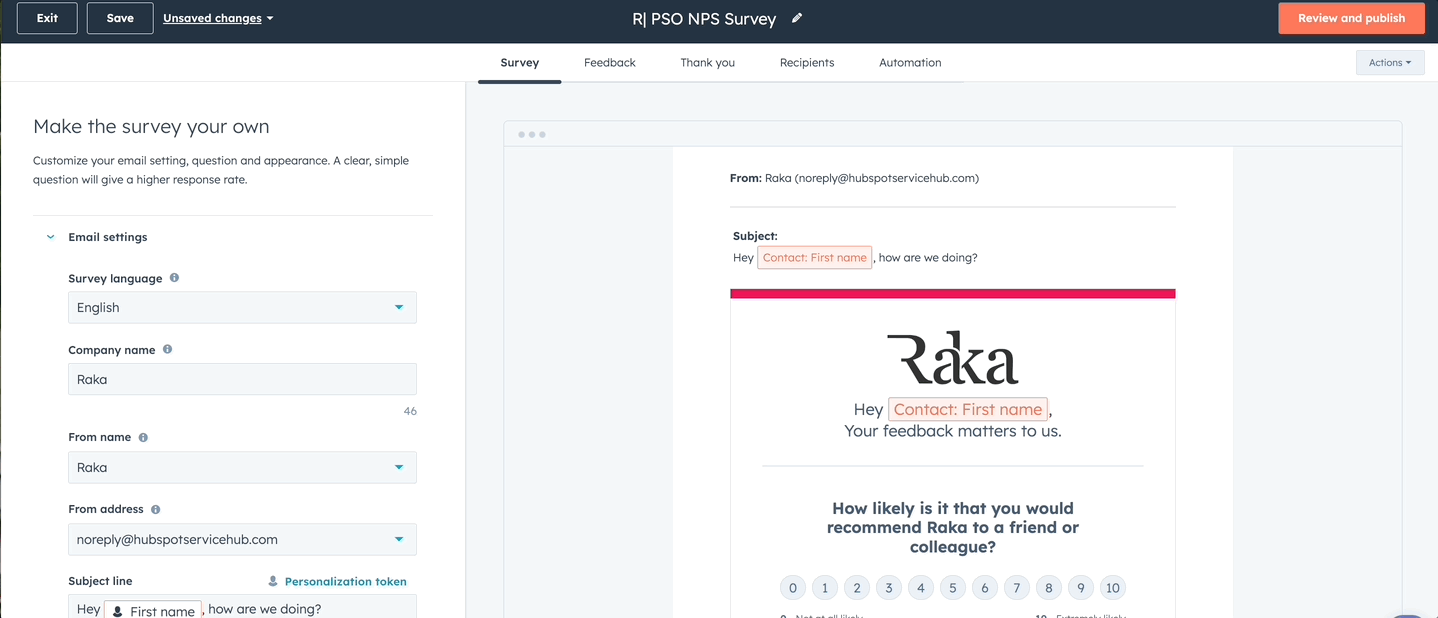
Feedback
While you’re unable to adjust the NPS survey question, you can create custom questions to get further feedback from your survey respondents. In the example below, we have uniquely tailored messaging for Detractors, Passives, and Promoters.
- Detractors: Sorry we missed the mark. Is there anything else you’d like to share with us?
- Passives: Sorry your experience wasn’t the best. Is there anything else you’d like to share with us?
- Promoters: Is there anything else you’d like to share with us?
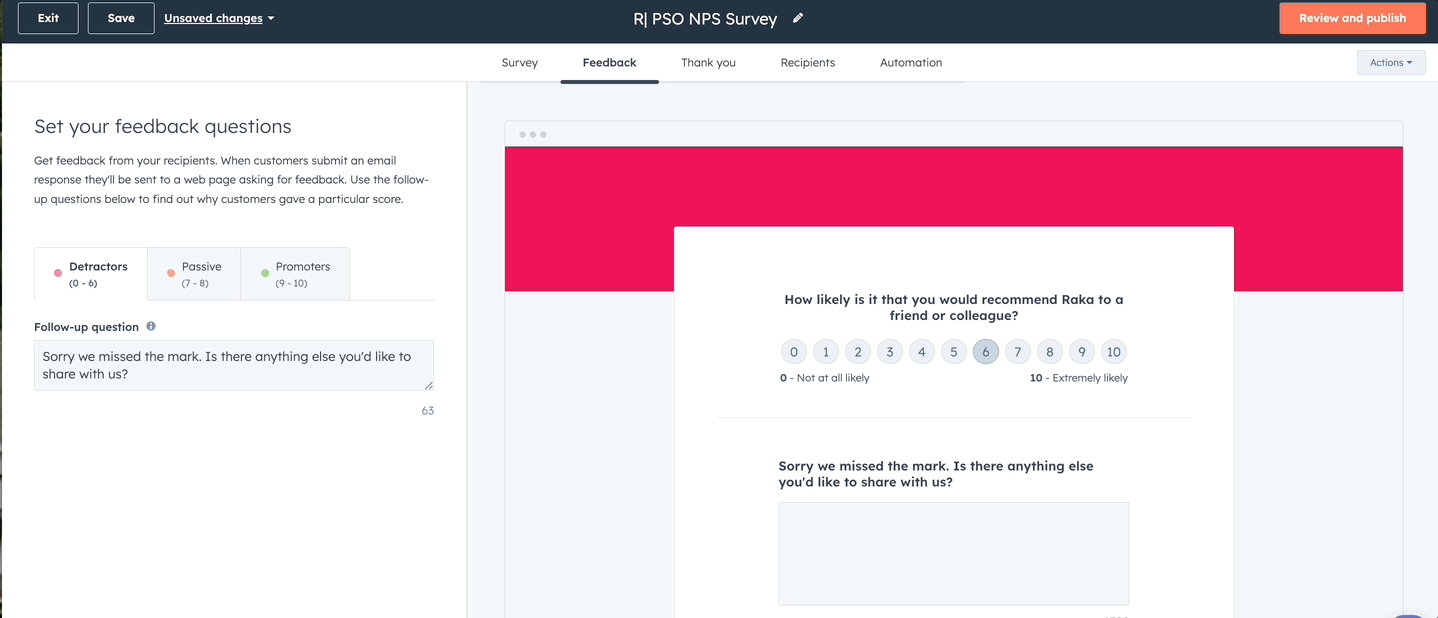
Thank you
Like the Feedback section, you can also customize the response Detractors, Passives, and Promoters see after providing additional feedback.
For Detractors and Passives, we’re setting the expectation that someone from our team will be in touch shortly to discuss their experience and how we can help make it right. For Promoters, we want to capitalize on their positive sentiment and ask them to leave us a review.
Recipients
The “Recipients” tab is where you select who will receive your survey, when they will receive it, and how often they’ll receive it.
It’s important to target your survey to the right people at the right time. For example, if you ask for feedback weeks after an engagement has ended, your customer won’t be as likely to be able to provide specific examples because it’s not fresh in their mind.
Here’s who we’re targeting for our HubSpot Onboarding Service NPS Survey:
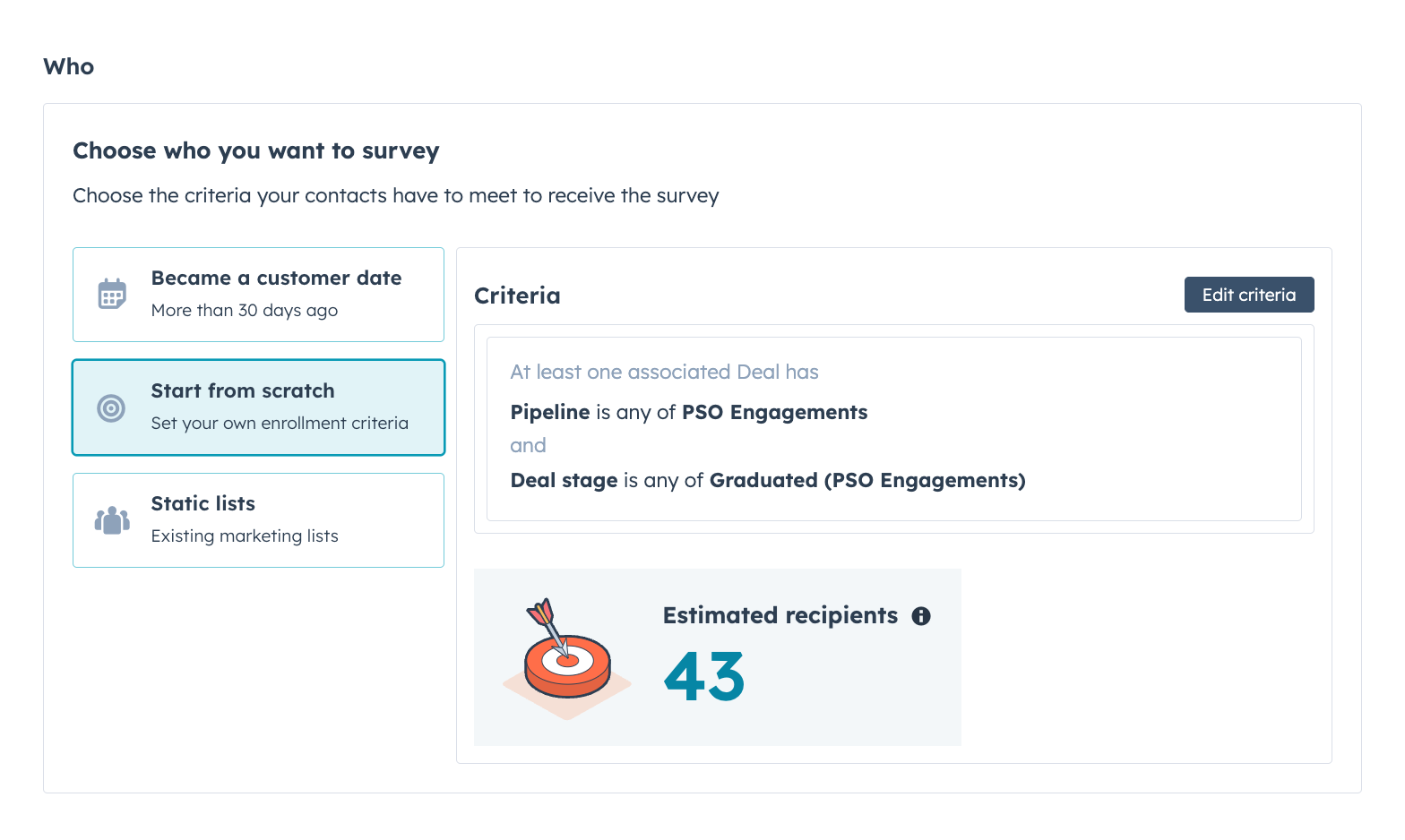 HubSpot provides an out-of-the-box option of “Became a customer date is more than 30 days ago,” which will deploy the survey to someone a month after becoming a customer. This is a great option for targeting, but since we’re specifically sourcing feedback from clients who have received our onboarding services, we opted to set our own enrollment criteria to be:
HubSpot provides an out-of-the-box option of “Became a customer date is more than 30 days ago,” which will deploy the survey to someone a month after becoming a customer. This is a great option for targeting, but since we’re specifically sourcing feedback from clients who have received our onboarding services, we opted to set our own enrollment criteria to be:
- Pipeline is any of: PSO Engagement
- This means they’re a HubSpot Onboarding Customer
- Deal stage is any of: Graduated (PSO Engagements)
- This means they’ve completed the onboarding process
We added in a one-day delay, so recipients will receive this survey a day after their onboarding engagement has ended—while we’re still top of mind and our interactions are fresh.
As HubSpot Onboarding is a one-time engagement, we’ve set this survey to only trigger once instead of on a recurring basis.
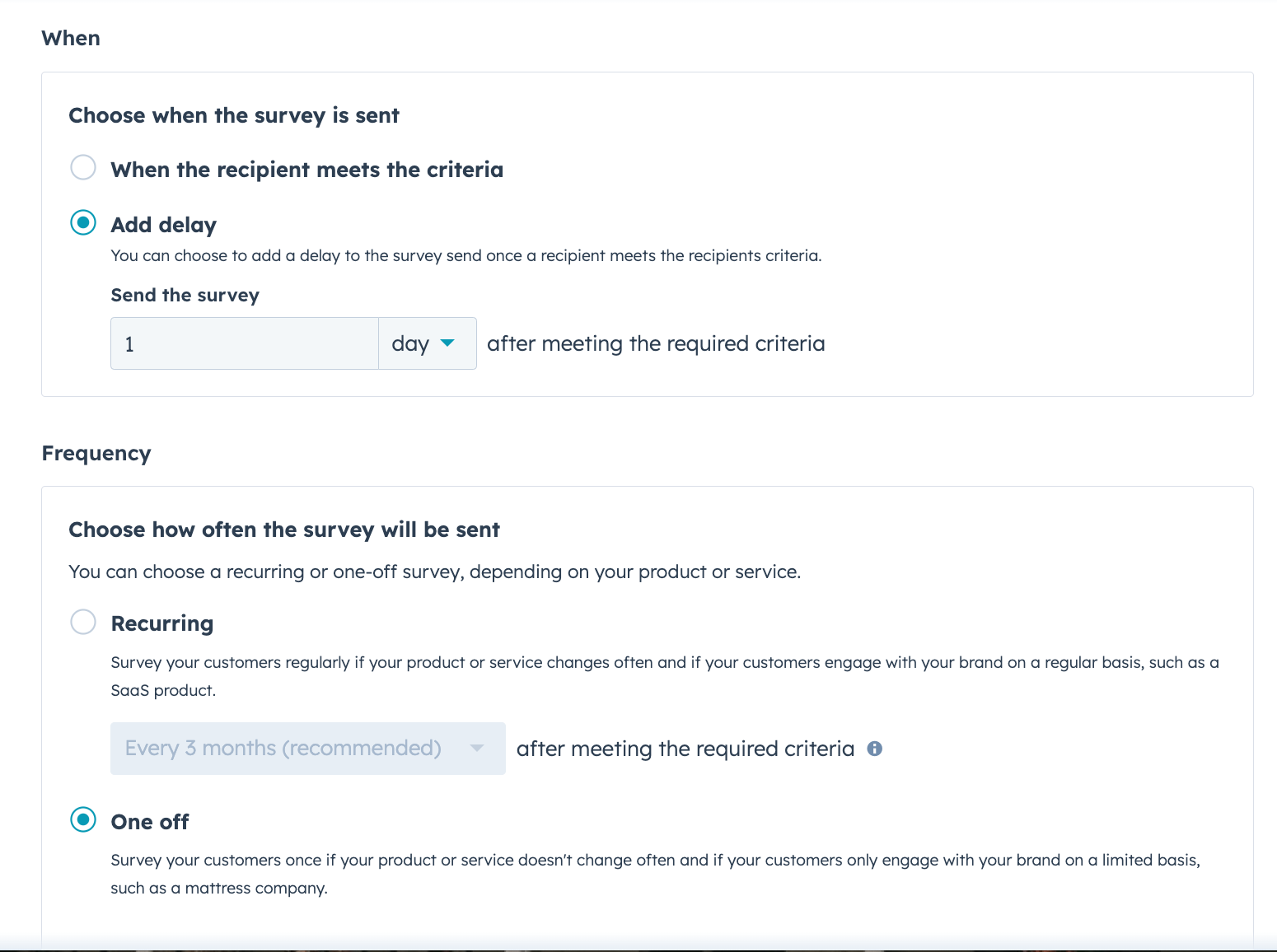
Automation
We’ve set up the NPS survey, customized it, and selected who to send it to—but we’re not done yet! Now we want to automate administrative or internal follow-up processes so we don’t have to manually do them.
Two days after the survey has been sent, if it hasn’t been completed, we’ve elected to re-send it to hopefully increase responses.
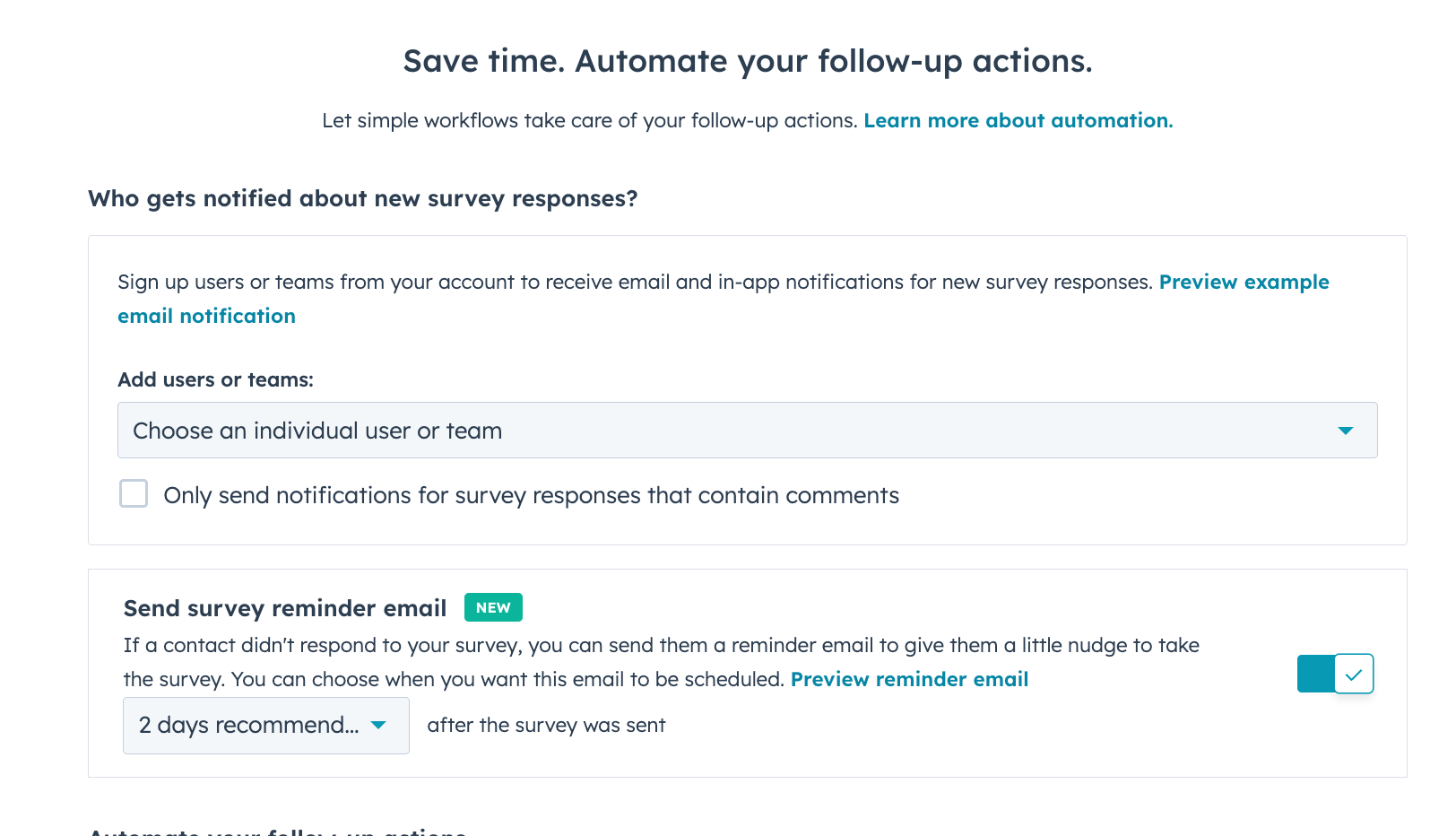
We’ve also automated a few items to help streamline and standardize our back-end processes. If someone is identified as a Detractor or a Passive, we’re sending an internal email notification to our team, and automatically creating a task to follow up and assigning it to a team member. This way, we make sure to always reach out to our Detractors and Passives to not only thank them for their feedback, but learn how we can improve in the future.
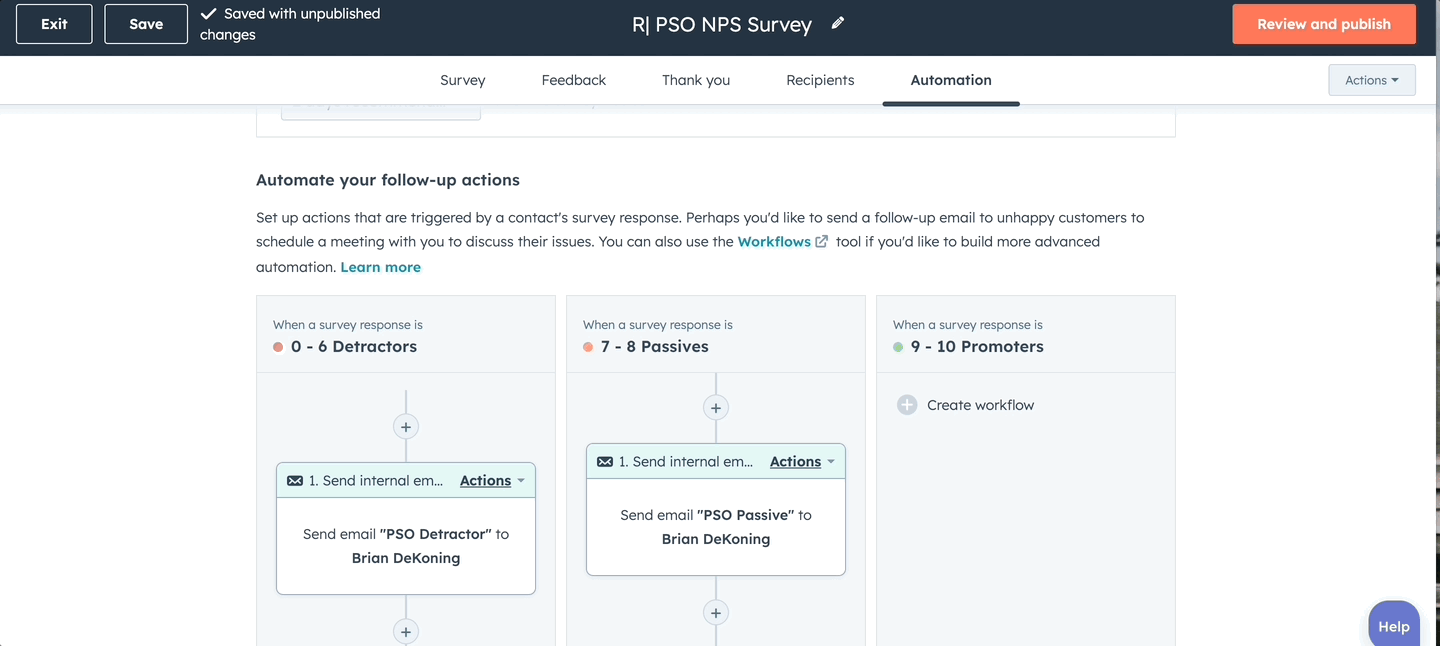
Wondering what automation we have in place for our Promoters? Check them out here.
Source customer feedback with HubSpot
Leveraging NPS surveys for customer feedback is a powerful way to measure customer loyalty and satisfaction. By using HubSpot’s Feedback Surveys tool, you can collect valuable data on your customers’ needs, preferences, and overall satisfaction levels.
If you’re looking to improve your customer experience and drive business growth, contact Raka today to learn how we can help you leverage NPS surveys to gain valuable insights into your customers’ needs.


